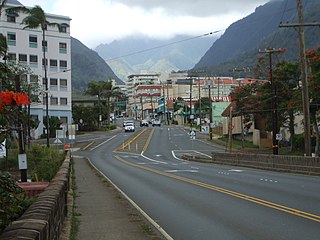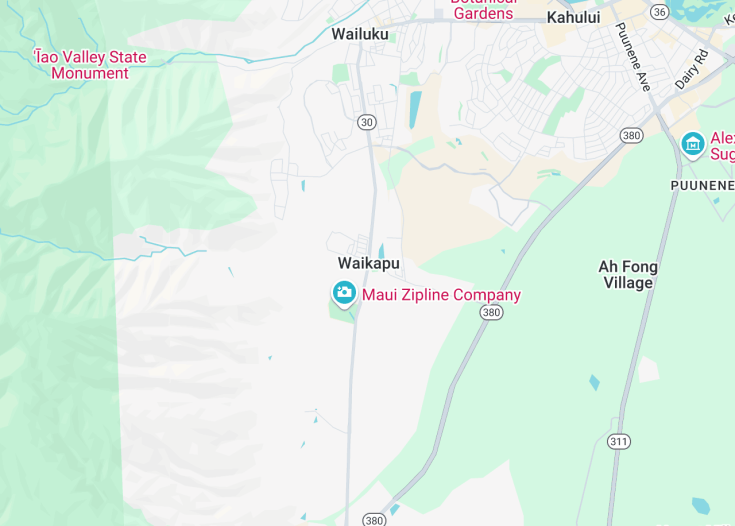Waikapu, nestled in the lush valley of Central Maui, Hawaii, offers a peaceful retreat from the bustling tourist spots with its historical charm and scenic beauty. This quaint area is known for its rich agricultural history and the iconic West Maui Mountains backdrop. Waikapu provides a unique glimpse into traditional Hawaiian culture and rural life. Visitors can explore the ancient heiaus (temples), the Waikapu Stream, and the famous Maui Tropical Plantation which showcases a variety of local crops and offers a range of activities including tram tours and zipline adventures.
For an enriching experience, visit the Maui Tropical Plantation. It’s an ideal place to understand Waikapu’s agricultural heritage and enjoy outdoor activities.
Ensure to check out the historical Nā Wai ʻEhā, “The Four Waters”, important for the history and culture of Waikapu, for a deeper connection with the area.
Top things to do & see in Waikapu
Select the following sights and activities to discover best tickets and tours available in Waikapu.
Waikapu: A Hidden Gem in Maui
| Country | Hawaii (USA) |
| Time in Waikapu | GMT-10 |
| Language spoken | English |
| Population | 3,000 (US Census data) |
| Currency | United States Dollar (USD $) |
| Airports |
|
Waikapu, nestled in the valley of the West Maui Mountains, offers a picturesque escape with lush landscapes and a rich history. This small town in Maui is renowned for its agricultural past and scenic beauty, including the infamous Nā Wai Eha, or “The Four Waters”, which are vital for the local taro fields. Once a plantation hub, Waikapu has transformed into a tranquil residential area with deep cultural roots linked to native Hawaiian traditions and the sugar cane industry.
Where is Waikapu?
Located centrally in Maui, Waikapu serves as a crossroads between the island’s eastern and western shores, making it a strategic point for exploration.
Distances:
| Route | Distance by car | Time by car |
|---|---|---|
| Waikapu to Lahaina | 28 miles | 45 minutes |
| Waikapu to Kihei | 15 miles | 25 minutes |
| Waikapu to Kahului | 10 miles | 15 minutes |
What is Waikapu famous for?
Waikapu is famous for its historical significance in the sugar cane industry and its beautiful landscapes that remain largely untouched by commercial tourism. Its verdant valleys and traditional waterways illustrate a rich heritage and natural beauty.
History
Waikapu, a serene and historical village on the island of Maui in Hawaii, USA, holds a rich history that spans several centuries. The chronicles of Waikapu trace back to the ancient Hawaiian era, encapsulating periods of thriving kingdoms, colonial impacts, and transitions into modern times.
Before 1778: Ancient Hawaiian Era
The first inhabitants of Waikapu were native Hawaiians who established their communities along its fertile lands, nourished by the Wailuku River. These early settlers developed complex agricultural systems, primarily focusing on taro cultivation, which played a central role in their diet and culture. Society was organized around a system of land division known as ‘ahupuaʻa,’ which linked communities from the mountain to the sea, promoting resource sustainability.
1778-1893: European Contact and the Monarchical Period
European contact began with the arrival of British explorer Captain James Cook in 1778. This marked the beginning of significant changes in the Hawaiian societal structure and the introduction of Western ideologies. The 19th century saw the consolidation of the Hawaiian Islands under the rule of King Kamehameha I, who unified the archipelago, including Waikapu, into the Kingdom of Hawaii. During this period, Waikapu experienced the introduction of new crops like sugar cane, which eventually became a dominant industry in the area.
1893-1959: Territorial Period
Following the overthrow of the Hawaiian Kingdom in 1893, Waikapu came under American influence as part of the Provisional Government and subsequently the Territory of Hawaii established in 1898. The sugar industry reached its zenith, with plantations expanding and the population growing due to the influx of immigrant workers from Japan, China, Portugal, and the Philippines. This era greatly shaped Waikapu’s cultural and social landscape, leading to a melting pot of diverse ethnicities.
1959-Present: Statehood and Modernization
Hawaii’s admission as the 50th U.S. state in 1959 brought further modernization to Waikapu. The decline of the sugar industry led to new economic pursuits, notably in tourism and diversified agriculture. Today, Waikapu is cherished not only for its picturesque landscapes and rich soils but also as a place of cultural heritage, maintaining a balance between development and preserving its historical essence.
Visit Waikapu
What to see and do in Waikapu, Hawaii (USA).
Waikapu, nestled in the verdant valley of Central Maui, offers a blend of historical richness and natural beauty. Visitors can explore the Waikapu Valley, known for its lush landscapes and streams. Hiking enthusiasts will find the Waihee Ridge Trail particularly rewarding with its breathtaking views of the valley and ocean. Other notable attractions include:
- Maui Tropical Plantation: Experience tropical agriculture and enjoy local produce and products.
- The King Kamehameha Golf Club: Play golf on a course designed by Ted Robinson Sr., with stunning views of Haleakalā and Maalaea Bay.
- Kahili Golf Course: Another scenic option for golf aficionados, offering panoramic views and challenging plays.
Annual Events in Waikapu
Waikapu hosts several events that celebrate its rich culture and community spirit. Most notable is the Waikapu Community Festival, held annually in March. This event features local music, dance, and food, showcasing the unique cultural fusion of the community.
Best time to visit Waikapu
The best time to visit Waikapu is between April and October when the weather is drier and warmer, providing optimal conditions for outdoor activities and exploration. This period also avoids the peak tourist seasons, offering a more relaxed and intimate experience of the area’s natural and cultural sites.
Is Waikapu worth visiting?
Waikapu is undoubtedly a destination worth visiting, particularly for those who appreciate a mix of history and nature. Its lush landscapes and historical sites offer a peaceful retreat from the more tourist-heavy areas of Maui. However, visitors looking for extensive nightlife or shopping may find Waikapu less appealing. The village’s charm lies in its tranquility and the preservation of its cultural and natural heritage, making it ideal for those seeking a thoughtful and restorative travel experience.









